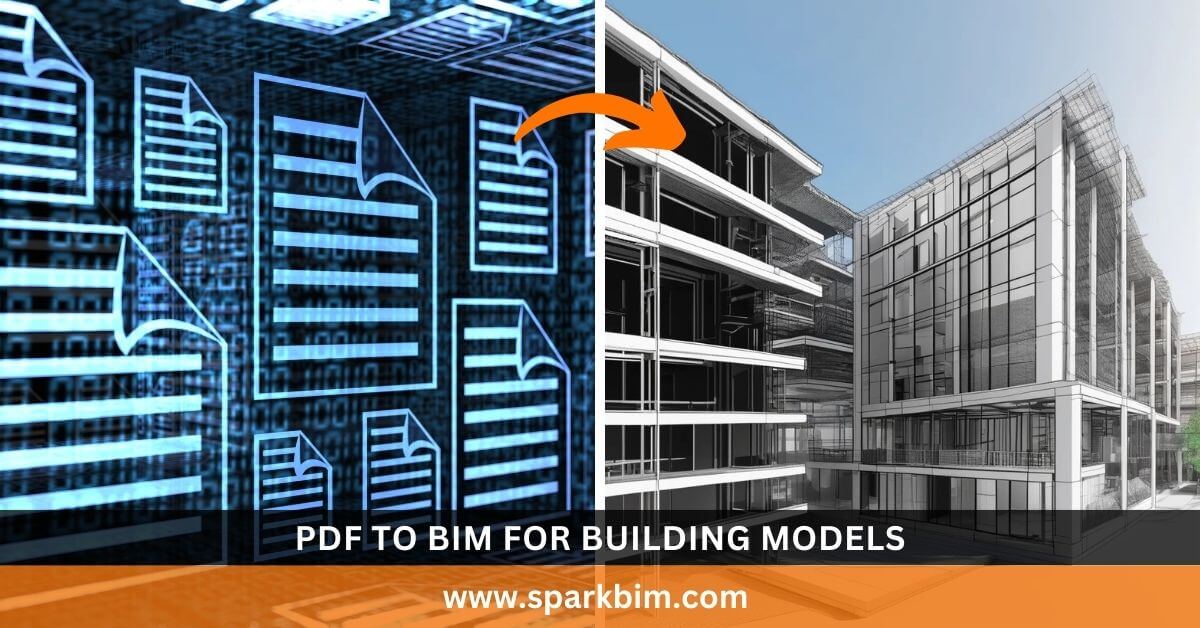Table of Contents
ToggleThe demand for precise, accurate, and efficient workflows has never been higher in modern construction and architecture. Building Information Modeling (BIM) has emerged as the cornerstone of the design and construction industries, offering digital representation of buildings’ physical and functional characteristics.
However, converting PDF to BIM for Building Models is increasingly essential. This conversion process ensures that architects, engineers, and construction professionals can access up-to-date, detailed, and actionable data when working on complex projects.
This blog post explores why converting PDF to BIM is essential for creating accurate building models and how this process can enhance productivity, reduce errors, and streamline project workflows.
Understanding PDF and BIM in Construction
To fully grasp the importance of converting PDFs to BIM, it’s essential to understand the two terms.
PDF (Portable Document Format):
PDFs have been used in construction to share architectural drawings, blueprints, and documentation. While PDFs are universal and easy to share, they are static and don’t contain the interactive or intelligent data needed for advanced modeling and analysis.
BIM (Building Information Modeling)
The BIM, on the other hand, is a digital tool that allows professionals to create, manage, and analyze building projects with greater accuracy.
BIM integrates both 3D geometric information and non-geometric data, enabling users to generate detailed models that include data on materials, quantities, schedules, costs, and even performance factors.
Although PDFs are widely used for project documentation, they do not allow for the creation of dynamic and accurate 3D models. This is where converting PDFs into BIM comes into play.
Benefits of PDF to BIM for Building Models
Converting a PDF to BIM for Building Models may seem complex, but it offers significant benefits. Let’s examine how this conversion can be a game-changer for construction industry professionals.
1. Increased Accuracy and Precision
One of the most significant advantages of PDF to BIM for Building Models is the accuracy and precision it brings to complex models. Due to their static nature, professionals often face limitations when working with PDFs.
While PDFs can contain detailed 2D drawings, they do not allow real-time editing or data integration. By converting a PDF to BIM for Building Models, architects and engineers can extract all the relevant data from the 2D drawings, transforming them into dynamic 3D models.
These 3D models accurately represent the building’s design and enable professionals to assess the relationship between various components. BIM models can be manipulated in ways PDFs simply can’t, leading to more precise decision-making and better project outcomes.
2. Improved Collaboration and Communication
Effective collaboration is key to the success of any construction project. Converting PDFs to BIM ensures that all project stakeholders – Architects, Contractors, Engineers, and Facility Managers – work with the same accurate and up-to-date data.
Unlike PDF drawings, which can be misinterpreted or outdated, a BIM model acts as a single source of truth, keeping everyone aligned and reducing misunderstandings.
Moreover, BIM enables the creation of shared models in cloud-based environments, allowing multiple teams to work on the same project simultaneously. This enhanced collaboration is critical in complex building projects where continuous team communication is paramount.
3. Better Visualization and Design Exploration
PDFs are limited to 2D images, which can be hard to interpret and visualize in a three-dimensional space.
On the other hand, BIM allows for the creation of interactive 3D models that provide a more realistic visualization of a building. With BIM, project teams can see how the building components fit together and better evaluate the design.
Additionally, BIM enables design exploration by providing the opportunity to make real-time adjustments. For example, architects can quickly test different design options or explore potential changes to materials and layout.
This flexibility helps to identify issues early in the design process before they become expensive problems during construction.
4. Reduced Risk of Errors and Rework
Construction projects are often subject to unexpected changes, delays, and errors. When working with traditional 2D plans or static PDFs, mistakes can arise due to miscommunication or misinterpreting the drawings. These errors can lead to costly rework, delays, and a reduction in overall project efficiency.
PDF to BIM for Building Models significantly decreases the chances of errors. The intelligent data embedded in the BIM model helps ensure that all components are accurately represented.
In addition, BIM tools often come with built-in clash detection, allowing designers to identify and resolve potential conflicts between various building systems (e.g., plumbing, HVAC, electrical) before construction begins.
5. Time and Cost Savings
The time and cost-saving benefits of converting PDF to BIM cannot be overstated. Professionals can save valuable time by eliminating the need for manual drawing interpretation and calculations.
Additionally, because BIM models are more accurate and provide deeper insights into the design, project managers can better plan resources, track progress, and stay within budget.
For example, BIM can generate accurate material quantities, allowing project teams to estimate costs better and reduce waste. Moreover, detecting design flaws early in the process can avoid costly changes or delays, optimizing the project’s budget and timeline.
How the PDF to BIM Conversion Process Works
The conversion process typically involves using specialized software tools to read and extract data from 2D PDF drawings and convert it into a BIM-compatible format.
These tools leverage various algorithms and artificial intelligence (AI) technologies to identify components such as walls, windows, doors, and structural elements within the PDF.
Here’s a general overview of how the process works:
1. Import the PDF
The first step involves importing the 2D PDF file into a BIM software platform that supports the conversion process.
2. Data Extraction
The software analyzes the PDF and extracts key data, including dimensions, geometry, and materials. This step may also involve identifying annotations, labels, and other metadata within the PDF.
3. Model Creation
The extracted data is then used to generate a 3D BIM model. The software will automatically map the components in the PDF to their 3D counterparts, ensuring that the resulting model is as accurate as possible.
4. Review and Refinement
Once the model has been created, the design team will review and refine it as needed. They may adjust the geometry, materials, or other elements to improve the accuracy or feasibility of the design.
5. Collaboration and Integration
After the conversion process, the BIM model can be shared with other project stakeholders for cooperation and further refinement.
Conclusion
As the construction industry embraces digital technologies, converting PDF to BIM for Building Models is essential for more accurate, efficient, and cost-effective building projects.
By using BIM’s power, project teams can reduce errors, enhance collaboration, and streamline workflows, ultimately leading to better design outcomes.
While PDF files will likely remain a part of the construction workflow, the transition to BIM offers undeniable advantages. As professionals become more accustomed to working with BIM tools, the need to convert PDFs into dynamic building models will only grow.
By embracing this shift, architects, engineers, and contractors can future-proof their projects and ensure they are well-equipped to meet the challenges of the modern construction landscape.


